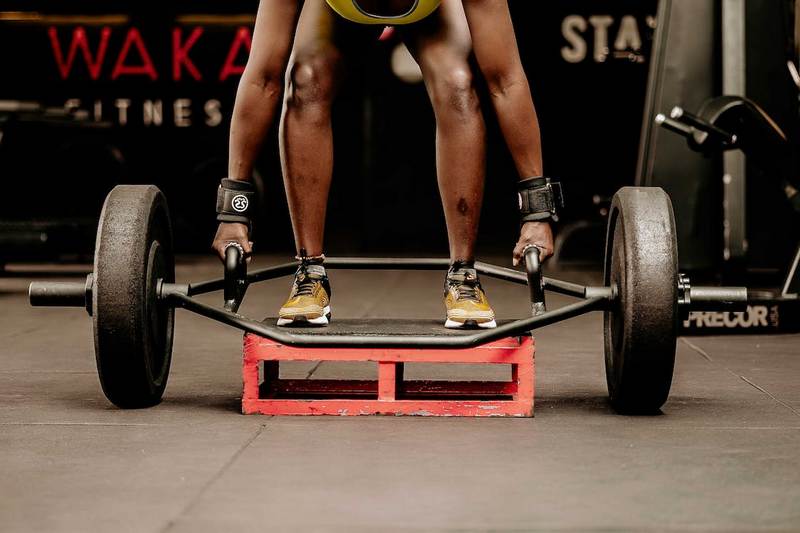
When it comes to performing deadlifts with an Olympic barbell, my go-to method is the squat stance deadlift. Essentially, it’s a stance similar to your squat but maybe a tad wider and a bit more upright than your conventional closed stance position. Think of it as taking the best of both worlds of the conventional deadlift as well as the sumo deadlift and finding a happy medium rather than one extreme or the other.
For folks with mobility, spine, or hip issues, this type of lift can do wonders. In fact, world renowned powerlifter Ed Coan used a similar setup that he referred to as the semi-sumo deadlift. Many folks not only find their body feels better with this method, but they also find they can handle heavier loads.
On their Advanced Human Performance website, brothers and fitness experts Dr. Joel and Joshua Seedman, discuss more reasons why the squat stance improves your deadlift.
According to the Seedmans:
- This stance is more natural and therefore safer than the traditional lift. Since it is safer and aligns more naturally with the body, it is a more effective lift too.
- The squat stance allows for heavier lifting under safer conditions, therefore it is a faster way to increase strength.
- This lift is used by famous, award-winning lifters – if it works for them, it will work for you too!
Five ways to improve your deadlift with the squat stance
Dr. Seedman has a great along with tips on how to best execute the squat stance:
1. Keep your feet relatively straight, within 0-10 degrees of toe flare. This differs from the outward 45 degree rotation seen in a conventional lift.
2. Your stance should feel like a normal squat, with your feet 2-3 feet apart. Your feet should be about shoulder width, or, if you feel more comfortable with a wider stance, about 20% wider than shoulder width apart. This gives you a firm base without the rotation that can damage your hips.
3. The grip will actually feel a bit like a typical sumo grip. The arms are between the legs and the grip is about 1-2 feet apart. With a narrow stance, the arms are even closer together, but as long as you have the grip strength to support the lift, this is not a problem.
4. Those used to a conventional lift will find the hips, torso and knee positions are very similar to a low bar squat. Ensure the knees are pushing out and the hips are back, while the chest is forward. The head is neutral and the arch of your spine should feel natural. When bending for the lift, you’ll rotate the torso about 45 degrees to better help keep the hips in line and for a smoother range of motion.
5. You are going to flex on this lift – even though that seems counterintuitive. Trust the Seedmans on this; after you pre-load by pulling out the slack, firm up your spine by flexing your lats. Pull your shoulders blades down and back. Feels weird? It will! It’s going to take a few lifts to get used to this type of movement, but you’ll soon find that the preload/flex lats/shoulder blades pulled down move feels more natural and beneficial.
Learn more
Embracing a new way to do a lift you have known and loved for years can feel like a challenge, but isn’t deadlifting all about the challenge itself? Learn more about the benefits of the squat lift, and other fitness advice, on Seedman’s website.


